Dark skies. Strobe lights. Log-splitting thunder. Wind twisting trees. A riproaring summer storm was upon us. We waited it out (nothing else to do) hoping none of the trees would twist and fall.
After the rage, a last grumble or two, then peace and an early dusk. The woods, shadowy, shut up for the night we thought.
There were other forces at work. Was there a signal? Out from the ground, hundreds of winking lights rose in waves, dancing like stars tumbled to earth by the storm. But this was not fantasy.
Fireflies were waking and going sparking. For a while they twinkled for our pleasure. Then, casually, silently, they drifted off, back-packing their mini-torches to find a mate.
Had all these beetles reached grown-up mating age at the same time? Were the woods their hangout during the day until they went about flashing? Did the storm prompt their rising in unison?
The little lights brought back childhood memories of starry summer evenings when we would chase fireflies and herd them into mayonnaise jars with hole-studded lids and wonder at their glow.
Elizabeth Madox Roberts says it best.
A little light is going by,
Is going up to see the sky,
A little light with wings.
I never could have thought of it,
To have a little bug all lit
And make it go on wings.
That was years ago. We’d forgotten how much we missed those little lights. Now and again we would see some flickerings, but there was no magic, for the magic of fireflies lies in their dancing numbers. Bright city lights, pavement and pesticides had knocked them off.
Not until that summer when we moved to the swamps of eastern Carolina twenty-five years ago, did we see fireflies again during evening walks. My, did we see fireflies, winking bright as saucers against woodland edges. (Rarely in deep woods; no point shining your light under a thicket of leaves.)
We would time their blinks and try to establish patterns that would tell us how many different species lived in our neighborhood. But most only blinked once every four or five seconds (Once we saw two energetic souls light up with a series of twelve fast blinks.), so we guessed there was only one kind of firefly here.
Occasionally we would see a solitaire, motionless, blinking on and off as tireless as a lighthouse beacon. Was he waiting for that special female to blink back to him from her hideaway in weeds and grass?
While the sky was still dusky we could see bats dipping and whirling, gathering their evening meals, as quick on a dime as fireflies are slow on a nickel. Occasionally they’d swoop low and once a couple, locked in (amorous?) embrace, dove at us, so fast we had no time to react. Just before we expected a splat in the face, they split and careened away. Bat sonar really works.
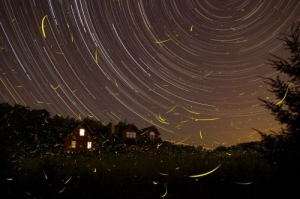
Fireflies and star trails in this time lapse photo. From http://www.firefly.org
After the evening star rises and the sky turns luminous indigo and the breeze quiets, an occasional firefly will venture above the treetops and to our imperfect eyes, he seems to merge with the constellations. One last flight before retiring for the night?
On some still nights we can feel the silence of their lights. On other nights, especially after a good rain, we are overwhelmed with the raucous songs of frog-impresarios wooing mates. Along with insect calls, and maybe a bobcat scream or a night heron squawk, this light and sound show beats any Imax production.
During one evening walk we saw the moist grass on the verge glowing with greenish-white neon auras. A closer look showed small creatures with segmented bodies that looked like flat, stubby caterpillars. Firefly larvae! An odd place for them, next to the road, but they were on the move. We never saw them again. Despite their apparently random wanderings they must have found suitable bed and board in the brush until the following spring.
That night on the way home we had a good time singing our version of the Mills Brothers’ classic that hit the charts when we were in high school. More memories.

Firefly larvae glowing in leaf litter. From http://www.firefly.org
Glow, little glow-worm, glimmer, glimmer
Glow, little glow-worm, glimmer, glimmer
Lead us lest too far we wander
Love’s sweet voice is calling yonder
Glow, little glow-worm, glimmer, glimmer
Glow, little glow-worm, glimmer, glimmer
Light the path below, above,
And lead us on to love.
Our community has evolved over a couple of decades. Then it was a weekend retreat, now it is home to permanent residents. Haphazard clearing of woods where firefly larvae lived broke the forest up into islands that were less inviting to wildlife (and fireflies) than are contiguous, unbroken tracts.
Security lights on new homes banished darkness, creating bright patches that snuff out firefly signals. Even a few passing cars that scatter light across the roads temporarily stop the pulses.
Then there was the run of dry years that may have discouraged survival of the young. Firefly-magic seemed to be fading even here, where we thought it would always be a bright evening welcome to summertime.
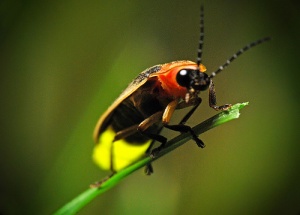
Female waits hidden in grass and signals back to a male that suits her fancy, from http://www.firefly.org
Too bad, because the firefly is one of those hardworking unsung heroes in meadows and woods. In our yards, too, if we let them in.
The cruising males we see will only be around for a couple of weeks, enough time to mate. Neither they nor the egglaying female will eat. But larvae living in leaf litter and rotting logs are eating machines; their fare includes a gardener’s nemeses: mites, slugs and snails. Good reason to keep pesticides out of the yard and haphazard municipal spraying out of the neighborhood. (Ironically, a search for fireflies on Google turns up an ad for a pesticide applicator.)
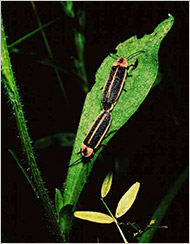
Fireflies mating in the female’s hideaway, male below. Photo by Dr. Sara Lewis, evolutionary ecologist at Tufts University
Good reason to leave parts of the yard messy, too. Meadows of grasses and wildflowers left unmowed can provide boudoirs for females who wish to signal an invitation to males for a mating date.
And maybe consider dimming outside lights, too. Even the shine of a full moon will interfere with reading signal-beams meant for their eyes only.
This year, the rainiest in a decade, we are seeing more fireflies. Their sparks today are only a glimmer of long-ago evenings, but we see signaling in our garden and at the edge of the woods, in shaggy clearings and around unmowed roadside ditches.
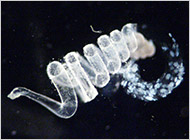
During the long mating the male gives the female a nuptial gift of protein which may increase number of eggs produced. Tufts University photo
Early one evening I found several hovering over a patch of periwinkle in the garden, quite a congregation considering they usually operate as loners. As I watched their blinking, an answer came from among the leaves. One firefly, the anointed one(?), blinked back. After an exchange of blinks (my place or yours?) the two disappeared among the leaves, lights out for the night. No, dear reader, I did not follow.
Still, I keep thinking about all those fireflies caught in jars on summer’s eves. I, who was always last on the team in grade school, remember the ecstasy I felt when I could actually overtake and bag a meandery firefly. So, why don’t night-birds or bats chase them?

Sex is not safe in firefly land. The species pictured preys on other species, answering males and devouring them when they close in. http://www.firefly.org
It turns out that probably the major enemies of fireflies (besides progress and pesticides) are little kids with mayonnaise jars. Predators know instinctively, or after one brief encounter, to avoid the lethal wink of that languorous flier. It’s bad tasting — and most likely poisonous.
So, it looks like I was the bad guy in the life of a firefly. I can’t remember. Did I ever release my catches? Or did I leave them trapped and forgotten on a windowsill?
I’m glad they didn’t hold a grudge. I kind of like them lighting up my garden.




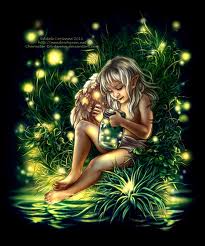

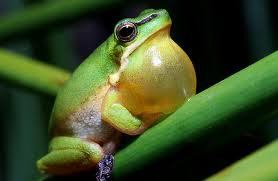
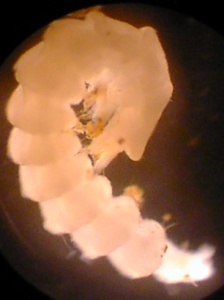
Useful info. Hope to observe more excellent posts down the road.
samuel